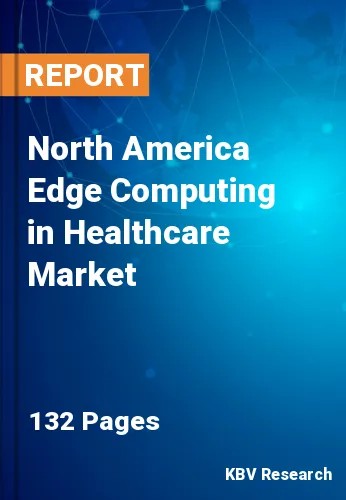The North America Edge Computing in Healthcare Market would witness market growth of 26.1% CAGR during the forecast period (2023-2030).
Edge computing and artificial intelligence (AI) are facilitating more rapid, more accurate diagnoses and expediting hospital drug distribution. A computerized insulin delivery system that uses experimental treatment sensors placed beneath the skin to track blood glucose levels and transmit the data to inject insulin and a mobile device is now available to diabetic patients. Algorithms inside the pump predict expected blood glucose levels and then order an inlet velocity to administer the right amount of insulin. All these are equipped with edge computing technology.
Edge computing holds the ability to help businesses save money on medical expenses. IoT edge devices might reduce operational expenses for providers by saving money on healthcare administration and involvement. Medical professionals have long grappled with incompatible systems that can be cumbersome and time-consuming. One could use networks connected to the web of medical interventions to overcome this issue. Their apps function fluidly beyond organizational boundaries due to increased performance efficiency.
The 2021 American Community Survey estimated that 16.8%, or 55,892,014, of the country's 331,893,745 total population or 55,892,014 persons were 65 years of age or older. These figures come from the Census Bureau's updated data from May 2023. Additionally, the number of Canadians aged 85 and older increased by 12% between 2016 and 2021, which is a rate that is over twice as fast as the rise in the country's general population. Increased risks of chronic diseases, impairments, falls, and other harmful health issues are present among the older population in the area. The region's nations have intensified their research and development into the best ways to offer senior patients the preventive treatment that would help them improve their health. As the region's population ages, wearable technology has become an important tool for monitoring and treating their deteriorating health issues.
Also, a substantial portion of internet users are located in North America, the center of high-tech firms. People are being drawn to the newest technologies partly due to the presence of well-known enterprises in the area. Edge computing in healthcare has seen rapid expansion due to the region's early embrace of cutting-edge technologies and the increased prevalence of certain chronic disorders.
The US market dominated the North America Edge Computing in Healthcare Market by Country in 2022, and would continue to be a dominant market till 2030; thereby, achieving a market value of $5,540.5 million by 2030. The Canada market is registering a CAGR of 29% during (2023 - 2030). Additionally, The Mexico market would witness a CAGR of 27.9% during (2023 - 2030).
Based on Component, the market is segmented into Hardware, Software, and Services. Based on Application, the market is segmented into Telehealth & Remote Patient Monitoring, Diagnostics, Robotic Surgery, Ambulances, and Others. Based on End User, the market is segmented into Hospitals & Clinics, Long-term Care Centers & Home Care Settings, Ambulatory Care Centers, and Others. Based on countries, the market is segmented into U.S., Mexico, Canada, and Rest of North America.
Free Valuable Insights: The Worldwide Edge Computing in Healthcare Market is Projected to reach USD 25.5 Billion by 2030, at a CAGR of 26.9%
The market research report covers the analysis of key stake holders of the market. Key companies profiled in the report include Cisco Systems, Inc, Nokia Corporation, Dell Technologies, Inc., Amazon Web Services, Inc. (Amazon.com, Inc.), Google LLC (Alphabet Inc.), Microsoft Corporation, Intel Corporation, General Electric Company, Hewlett Packard Enterprise Company, and NVIDIA Corporation.
By Component
By Application
By End User
By Country
Our team of dedicated experts can provide you with attractive expansion opportunities for your business.

